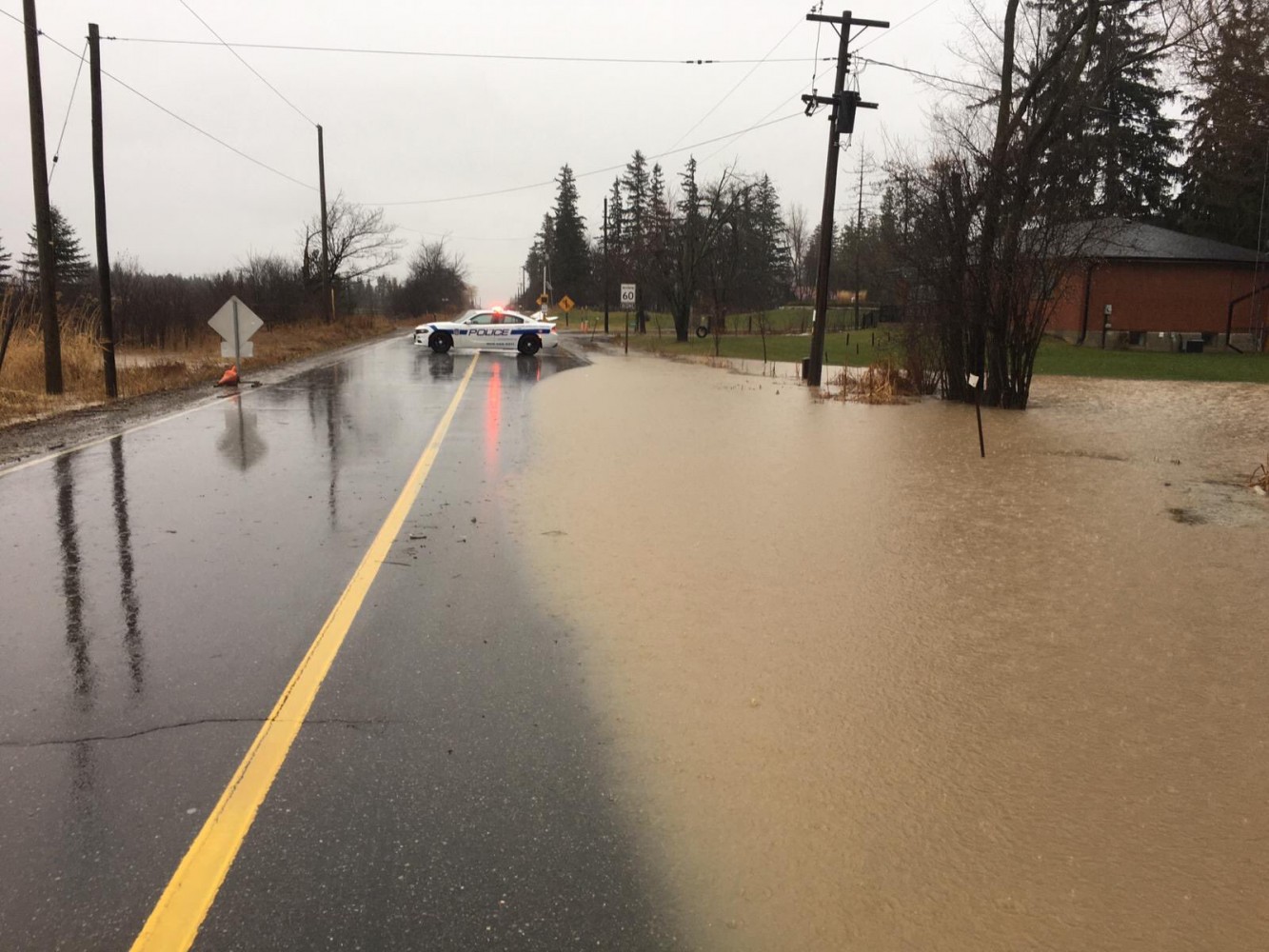
Global warming puts Brampton taxpayers on the hook for rebuilding a city to withstand massive storms
The 100 Year Storm needs to be renamed.
The term describes a common benchmark for municipalities, and their responsibility to create infrastructure able to withstand a once-in-a-century downpour.
This now outdated concept used rough data that showed cities were hit by the Big One, a storm that tests every aspect of a municipality's infrastructure and preparedness, about once every hundred years.
For Brampton, the term conjures memories of 1948 when a catastrophic storm submerged much of the city’s downtown. The rest of the GTA used to remember Hurricane Hazel in 1954, which slipped by Brampton, but killed 81 people in Toronto and caused over $1 billion in damages, in today’s dollars.
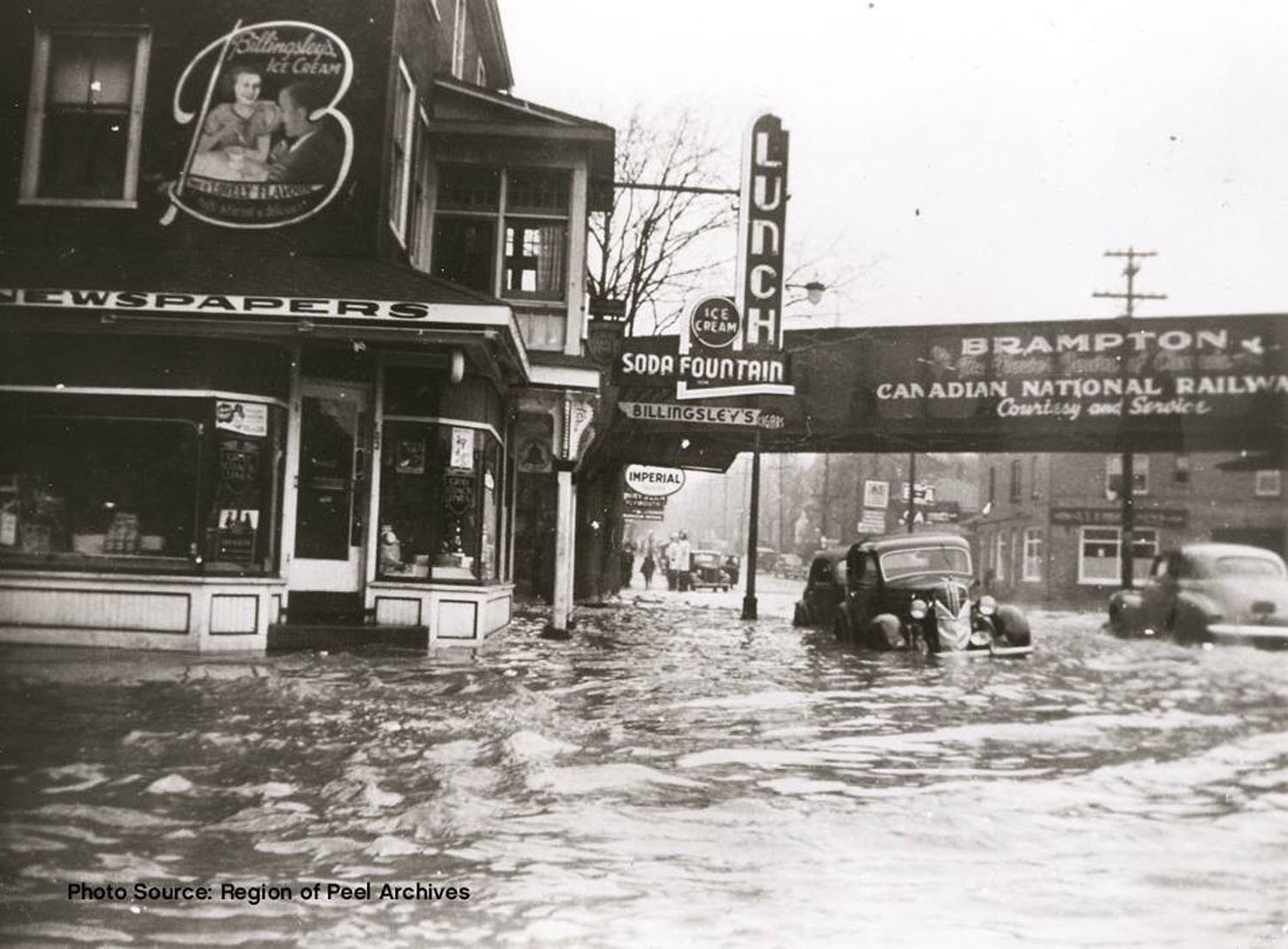
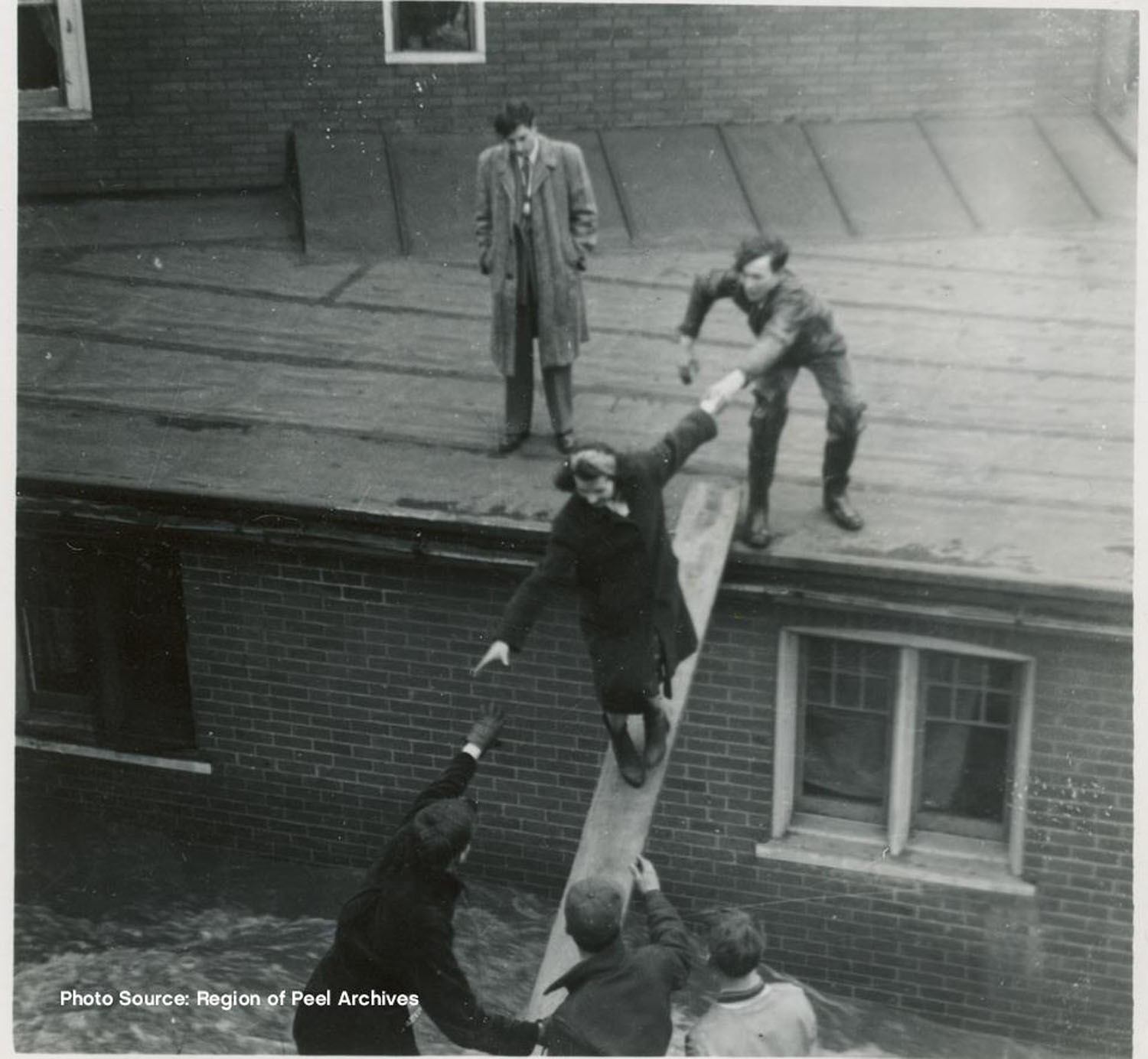
Images from 1948 show Brampton's downtown underwater following heavy rainfall. The City will need to invest heavily to avoid similar disasters in the future.
Over decades, cities prepared for these rare, but inevitable storms.
Recently, everything has changed.
Now, because of seismic changes in the environment, Brampton’s 2020 budget includes an ominous warning. The city’s current level of funding for stormwater maintenance and other flood mitigation does not meet even basic regulatory requirements for the near future.
Illustrated by the raging fires razing forests along the west coast, and the life-changing loss of ice-cover in the Arctic, climate change is causing massive upheaval in the global weather system. The Earth is about to record the hottest summer ever documented. Violent storm events, which often unload massive quantities of rain, are becoming all too common.
The notion of a 100-year catastrophe has been tossed away. And the financial impact on cities could be hard to absorb, especially if climate change caused by human activity continues at the current pace, which scientists have warned will cause profound changes that will lead to planetary destruction if global temperature increase is not dramatically slowed by the year 2050.
According to numbers from the Insurance Bureau of Canada, damage from natural disasters hit record levels in 2016, surpassing $4.9 billion and smashing the previous record of $3.2 billion, set in 2013. The economic costs of natural disasters have increased five-fold since the ‘80s and are expected to continue rising as climate change increases the frequency and severity of storms.
Municipalities, swamped by massive flooding more often, will need to spend big to mitigate impacts that will only get worse. The Federation of Canadian Municipalities projected earlier this year that an annual investment of $5.3 billion in municipal infrastructure and climate adaptation measures is needed in Canadian cities to keep up with the impacts of a rapidly changing climate.
In the City of Brampton, built in and around a floodplain and facing more rapid expansion to accommodate at least 300,000 new residents in the next two decades, climate change is particularly concerning.
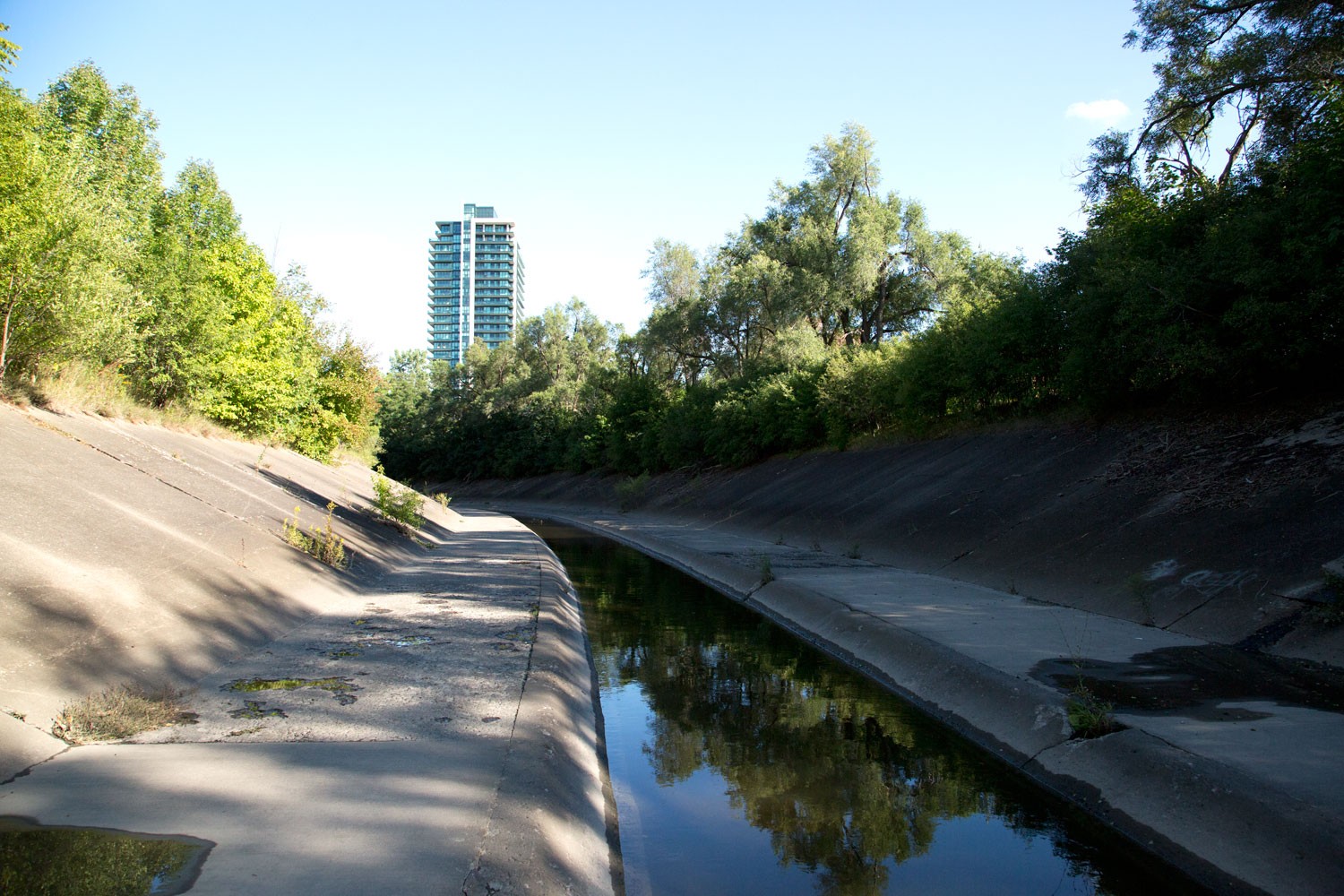
City officials have concluded past levels of investment in Brampton's stormwater infrastructure are not enough to meet future needs.
Kent Moore, a professor in the University of Toronto's Chemical and Physical Sciences department, explained that a warming climate and change in land use are two of the key reasons why we are seeing increasing instances of flooding.
“In the summer, when we have thunderstorms, things like the amount of rain that falls is really a function of how much water vapor the atmosphere can hold,” Moore explains. The more the atmosphere warms, the more water vapor can be held. The Government of Canada reports the country has warmed at twice the rate of the global average since 1948, 1.3 degrees Celsius in seven decades.
 This is the type of increase usually seen over tens of thousands of years, as part of the planet’s naturally changing environment.
This is the type of increase usually seen over tens of thousands of years, as part of the planet’s naturally changing environment.
But human activity has acted like a hyper-turbo-charged force, speeding up the process of warming.
“That means that one should expect more rain to fall because rain essentially is just the condensation of water vapor in the atmosphere,” says Moore.
The evidence of these significant rainfalls and ill-prepared infrastructure has been seen in Peel for the last several years. In October of last year, Brampton and Mississauga firefighters had to rescue three people when their vehicles became submerged in flooding on Torbram Road. In January, Peel Public Works issued a warning to drivers on Coleraine Drive when the roadway became impassable because of flooding. Similar alerts were issued for parts of Heritage Road and Wanless Drive during the same storm, prompting Peel Regional Police to close the roads and the Toronto and Region Conservation Authority to issue a flood warning, stating rivers will be experiencing “higher flows and water levels.”
Most recently, in August, several severe thunderstorms rocked the GTA, leading many conservation authorities, including the Credit Valley Conservation agency, to issue flood alerts.
There have been a number of once-in-a-century storm events in the GTA, over the last decade.
In July of 2013 huge areas of Mississauga were submerged after a massive flash-storm that saw some parts of the city receive more than 100 millimetres of rain in less than an hour. Brampton and the rest of the GTA were also hard hit.
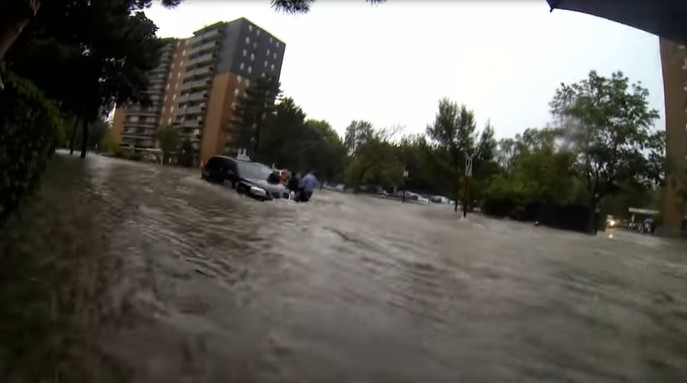
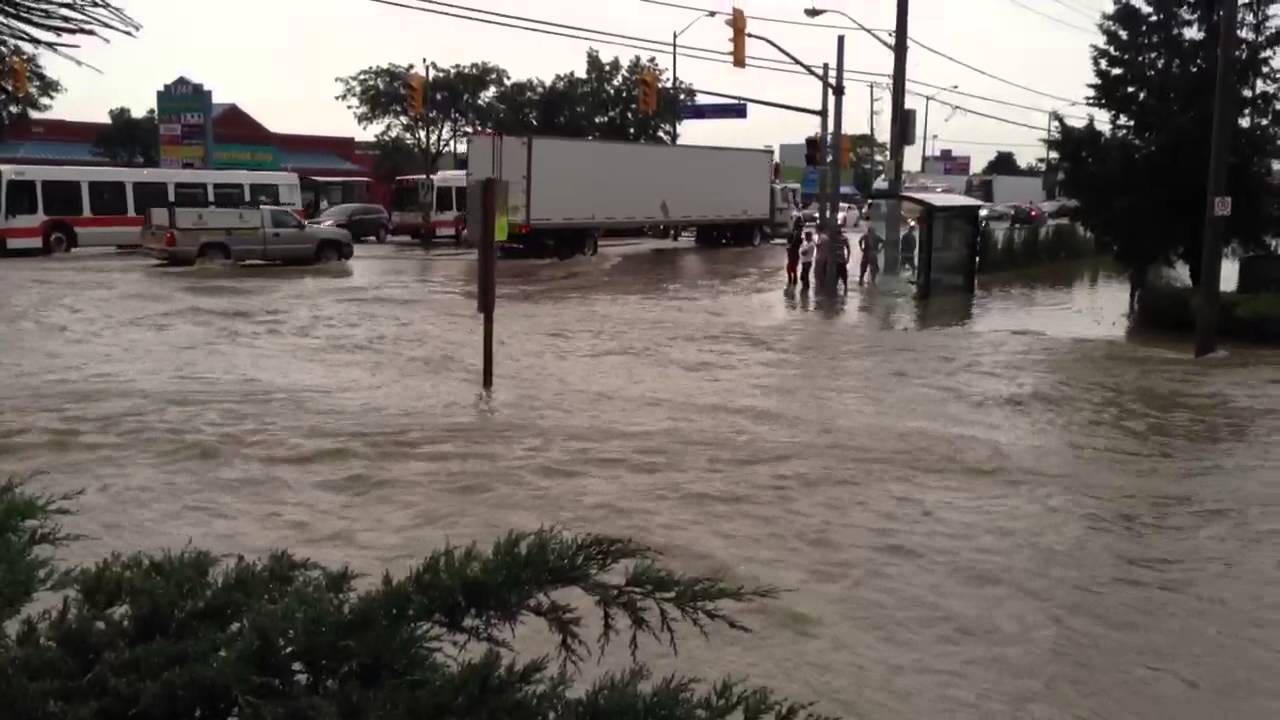
Images from 2013 flooding in Mississauga.
Not only does flooding lead to dangerous conditions on the streets, it creates havoc for homes. Thousands of basements and even main floors were flooded out in 2013. It was the most expensive natural disaster in Ontario’s history, with a billion-dollar bill. The City of Toronto alone had to cover more than $170 million in losses because of the flooding, and the devastating ice storm that hit at the end of the same year. Peel municipalities joined others across the GTA that needed emergency funding.
The flooding will only get worse as stormwater runoff created from heavy rain or melting snow has nowhere to go.
The growing problem is exacerbated by the impermeable concrete that covers most of the landscape in urban environments.
“Brampton used to be mostly farm, it’s now mostly residential, it’s been paved over,” Moore says.
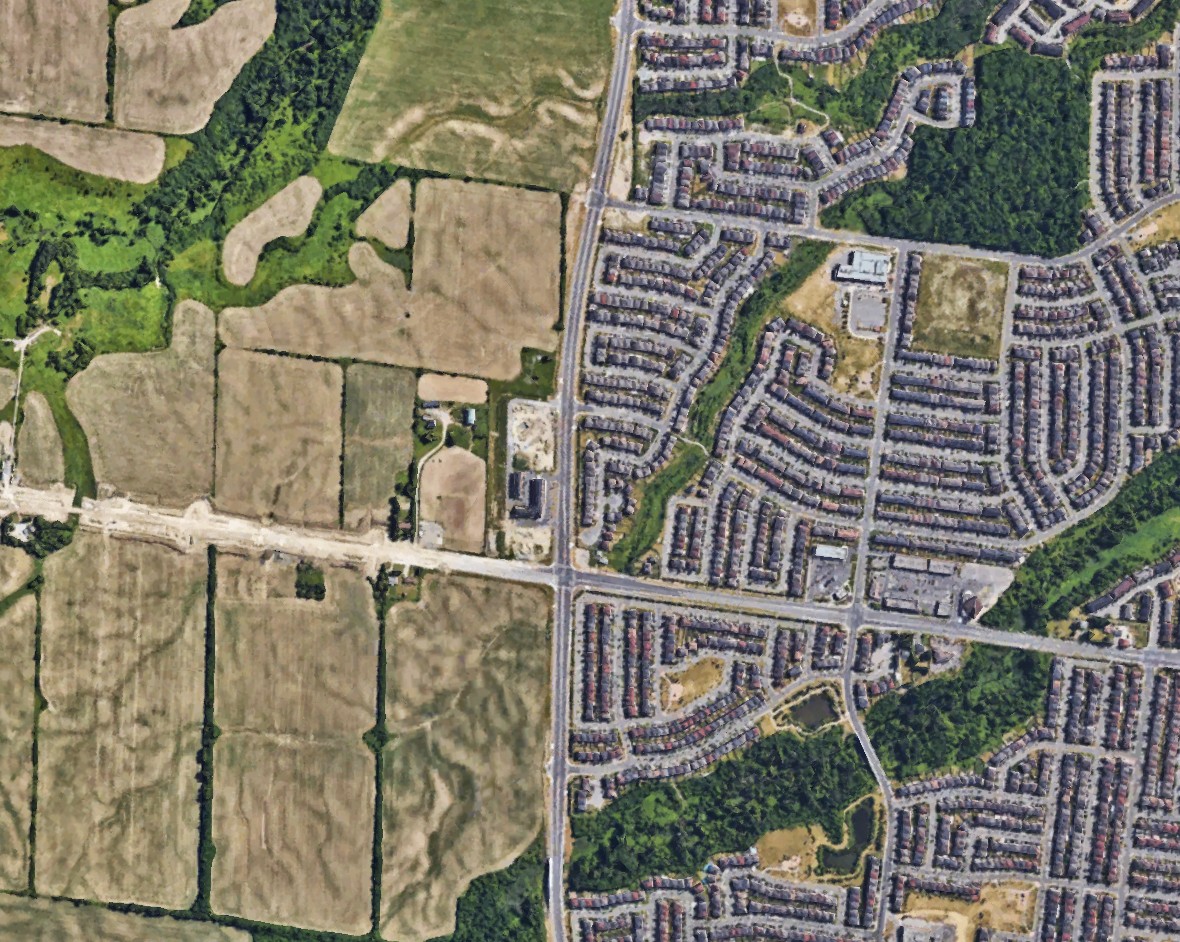
The steady creep of urban development, which covers the landscape in concrete, increases the risks of flooding.
With the earth covered in concrete, rain can’t be absorbed into the ground. Before, rain would fall into green areas, where moisture is slowly absorbed into the grass and soil and much of it flows eventually into creeks, rivers or streams. That’s not possible where the ground is covered. When the water runs off quickly, often backing up stormwater pipes, and finding its way into basements, it leads to widespread flooding.
When the surface of the planet is altered by humans, it also contributes to the warming of the earth, as green space, which absorbs heat, is lost in favour of more industrial landscapes that radiate the sun’s energy back into the atmosphere. This warms the environment, and with more stock added to the soup, larger volumes of water vapor are put into the atmosphere, leading to more rain.
Brampton’s main defence against this impermeable surface layer is its $1.12-billion stormwater management system that collects excess water. While the city’s 2019 State of Local Infrastructure (SOLI) report says the system is in a good state of repair, it points out 15 percent of stormwater management ponds in the city are in poor condition. These ponds, often constructed by developers, are a common site in modern subdivisions and give runoff a place to settle during heavy storms.
Stormwater infrastructure accounts for nearly a quarter of the City of Brampton's assets.
Brampton’s 2020 budget states the current levels of funding for stormwater maintenance and projects was “unsustainable to meet basic regulatory requirements in the near future.”
Now, after years of underfunding, the City of Brampton has been forced to implement a new stormwater charge in order to collect the needed funds to manage this critical system. The new charge, which began appearing on regional water bills this summer, is estimated to bring $22 million annually. The charge differs depending on the size of a resident’s property. In previous years, funds to maintain the system came from property taxes, but the new fund, which did not exist in 2019, will specifically invest in the stormwater drainage system, which consists of thousands of catch basins and manholes.
Over the next 10 years, the SOLI report shows $197 million will be needed to maintain or build stormwater infrastructure, $177.1 million of which will be coming from the user fee, the report states. The city’s current infrastructure gap representing projects that will need to be completed over the next decade but don’t have a funding source is $337 million.
At this time, the stormwater system appears to be Brampton’s only infrastructure option to deal with flooding and heavy rain. While the city does have the Riverwalk Area Urban Design Master Plan to deal with Downtown Brampton, which sits on the Etobicoke Creek floodplain, the plan is only specific to improving the flood risk in the city’s downtown core. There are other options the city could be considering.
Maximizing green infrastructure, such as having green roofs, can also help with the flooding issue in Brampton as it will help absorb water that currently runs off roofs more quickly, Moore said.
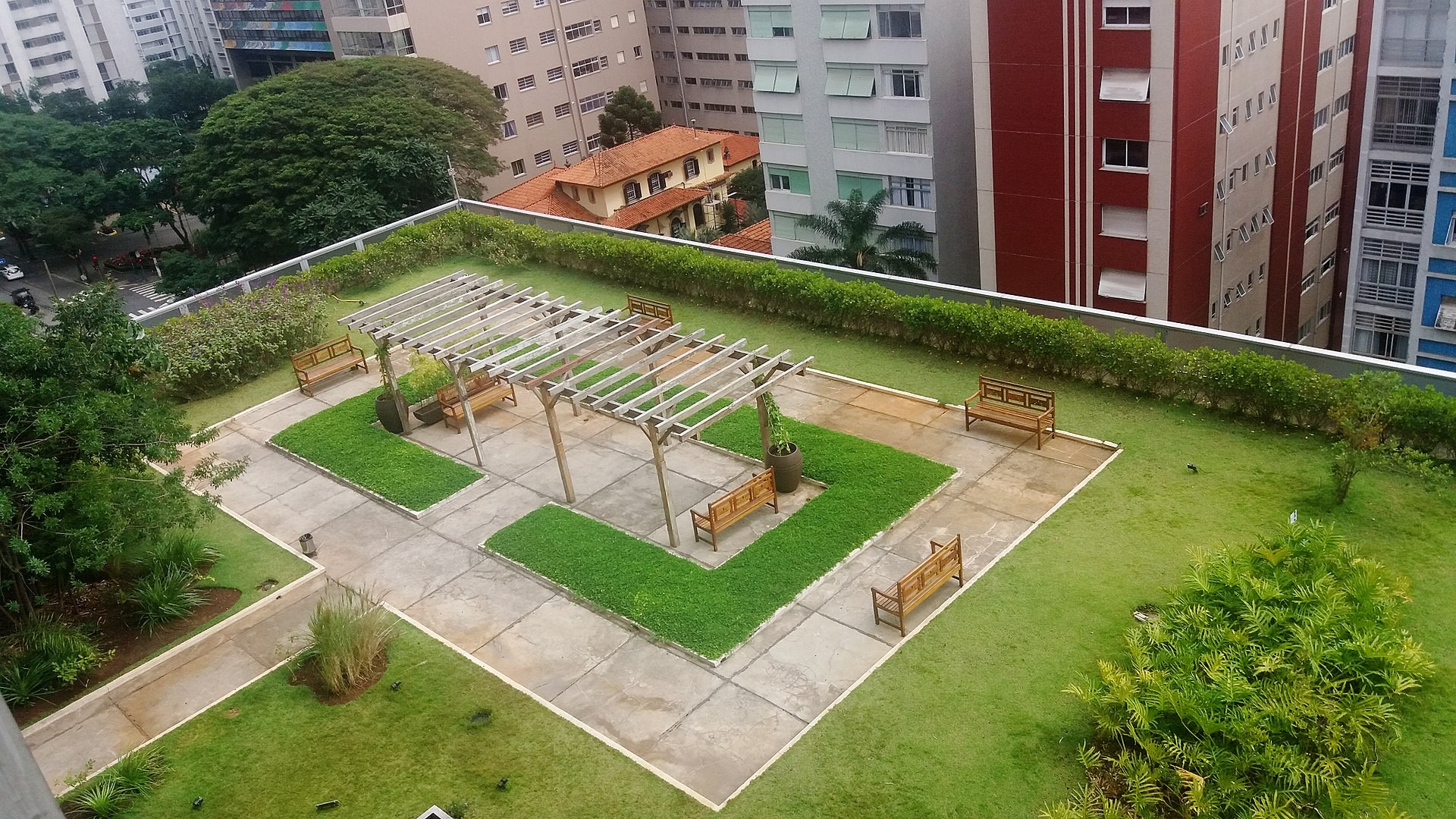
Green roofs are one potential investment cities can consider when looking to mitigate the impacts of climate change.
“Just intelligent design, making sure that when you design a residential area, you make sure that you include greenspaces, you mandate not connecting downspouts to the storm sewers,” he said.
Living the Mosaic, Brampton’s 2040 Vision to revitalize the city, does prioritise green space, but the vision is not coming anytime soon. Speaking 10 to 20 years down the road, Moore doesn’t believe the larger picture (not just specific to Brampton) will be getting better as the use of carbon isn’t going to decrease at the rate needed, as the world continues to warm through a level of destruction caused by humans.
Greenhouse gases “act as a blanket and keep heat in the system,” he said with most of this being carbon dioxide. One of the main sources of carbon dioxide is continuing to burn fossil fuels, which adds more carbon to the atmosphere, making the world warmer. Because of the way the GTA is structured, controlling this will be hard, Moore said. Like many people in the GTA, people in Brampton are reliant on cars to get from point A to B. The 2016 census showed the majority of the 278,000 commuters relied on such transportation to get to work, with more than 232,000 people using a car to commute on a daily basis.
Moore believes in 2050, the economy will be greener, as it will be easier to access things that make the economy greener, such as electric cars, which do not emit carbon. “I think over time, I'm optimistic. It's just that we're not going to see it quickly. I think that's really the challenge.”
Email: [email protected]
Twitter: @nida_zafar
Tel: 416-890-7643
COVID-19 is impacting all Canadians. At a time when vital public information is needed by everyone, The Pointer has taken down our paywall on all stories relating to the pandemic and those of public interest to ensure every resident of Brampton and Mississauga has access to the facts. For those who are able, we encourage you to consider a subscription. This will help us report on important public interest issues the community needs to know about now more than ever. You can register for a 30-day free trial HERE. Thereafter, The Pointer will charge $10 a month and you can cancel any time right on the website. Thank you.
Submit a correction about this story


